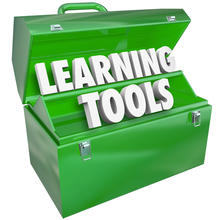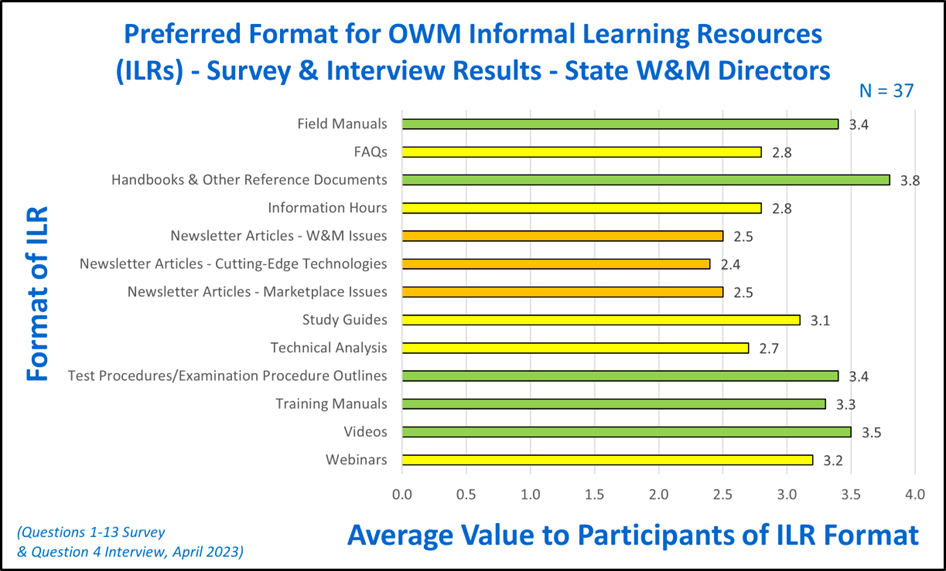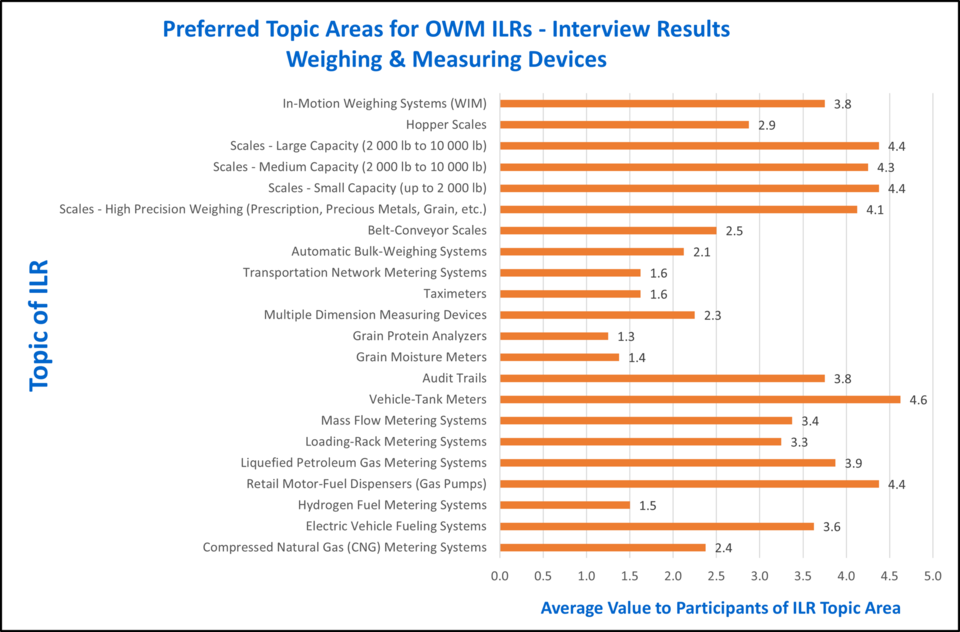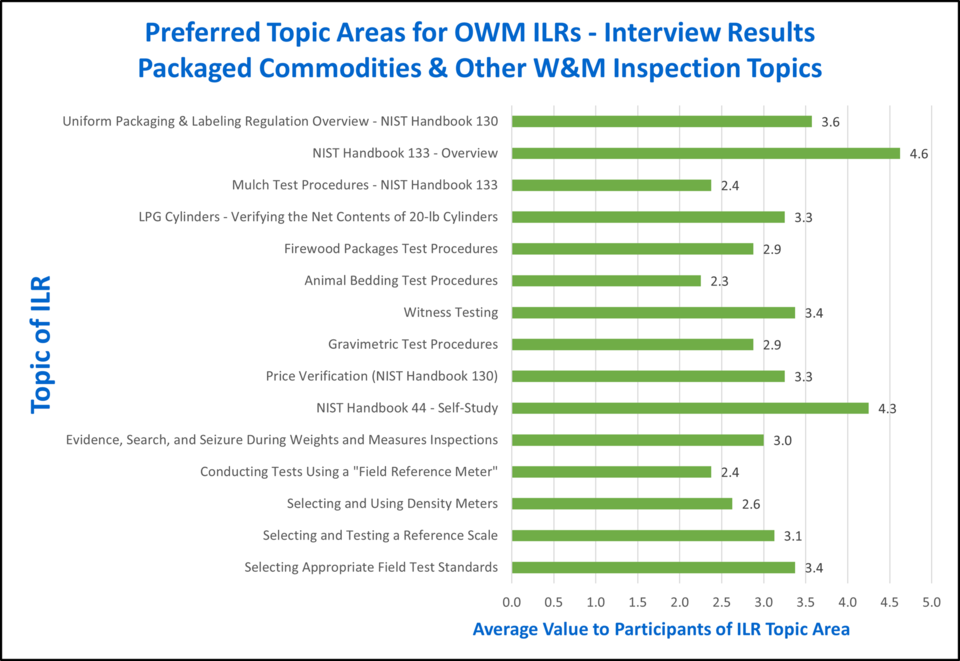
A few months ago, NIST OWM reached out to state weights and measures directors for their input on OWM’s “informal learning resources.” Through a series of surveys, interviews, and small focus group discussions with several directors, I was able to have specific discussions to determine what the states and regions need to support the technical training and professional development of their inspectors and staff. The purpose of this article is to share some of these findings, formally thank those who provided input, and share work underway to make those resources more accessible and relevant to weights and measures programs.
What is “informal learning?”
The term “informal learning” refers to learning that occurs outside of a formal educational setting such as a classroom. As with many workplaces, this kind of learning is very common in weights and measures programs and is often used by field inspectors who are continually faced with learning how to inspect and test new types of weighing and measuring devices and address new marketplace practices. “Informal learning resources” (ILRs) are any tools such as job aids, checklists, and other information that can help you learn how to accomplish a task, improve your skills, increase your knowledge, or just make it easier to do your job.
NIST OWM produces a limited number of ILRs such as handbooks, test procedures, and guidance documents to assist weights and measures programs and industry in applying NIST standards and test procedures. Increasing the number and type of ILRs and making them more readily accessible has the potential to provide educational resources outside of formal training, facilitate “on-the-job” training, and complement formal training events offered by NIST and others in the legal metrology community. Before beginning work to update our ILRs or create new ones, OWM needed to better understand customers’ preferences and needs, and we began with state weights and measures programs.
Getting Customer Input.
Yvonne Branden (Training and Web Coordinator) and I created an electronic survey for state weights and measures program directors. I also individually interviewed eleven state directors and hosted two small focus groups with a total of eight directors from different regions of the country. The initial focus was on resources that might be particularly helpful for field inspectors, though we welcomed and received input on how our resources might be used in other areas.
Initial data collection focused on learning about the format and topic areas of ILRs of most value to state weights and measures programs, challenges of accessing ILRs from the NIST website, and how weights and measures programs are using or might use ILRs. We also invited focus group participants to share insight on how NIST and its stakeholders might collectively use such resources more effectively as part of a broader strategy for weights and measures education.
For those state program directors who participated in this data collection, please accept our sincere thanks for your time and input!
What We Learned.
Some key takeaways from our research:
- The majority of training for weights and measures inspectors occurs on the job, using a variety of NIST and non-NIST ILRs.
- Weights and measures programs place a high value on the products and services provided by NIST OWM, both formal and informal.
- States are not accessing and using some NIST ILRs because they are not readily accessible, they are out of date, and/or directors are not aware they exist.
- Directors would make more use of NIST ILRs if these issues were addressed.
- Not all ILRs need to be accessed from the OWM website during an inspection but being able to download the resources on mobile devices would facilitate access and use.
- All states place a high value on ILRs in commonly agreed-upon “core” topic areas (small and large capacity scales, retail motor-fuel dispensers, vehicle-tank meters, and package inspection).
- The value placed on ILRs for “specialty” topics outside of core areas was less consistent.
The preferred format for NIST ILRs revealed Handbooks and Reference Documents and Training Videos as the most preferred format, followed closely by Field Manuals, Test Procedures, and Training Manuals.



For those interested in more information about the study and its recommendations, we plan to publish a complete summary with more details as a SP 2200 publication. Watch for a future newsletter article announcing its availability.
Our Next Steps.
We are considering the study’s recommendations to help us improve the availability and relevance of potential OWM ILRs and will implement those that provide the most customer benefit. Below are some steps already underway:
- OWM Web Redesign for Improved Accessibility. A resounding message we heard from our data collection was that stakeholders can’t use NIST ILRs if they aren’t easy to find. Redesigning our website to create a portal where stakeholders can quickly access learning resources and locate them by topic area would be a great help to stakeholders and encourage the use of OWM ILRs.
- Customer Feedback. OWM recognizes the need to regularly obtain feedback from all its stakeholders and will be looking for future opportunities to do this through means such as roundtable discussions and annual surveys. Please send us your feedback on our newly designed website pages. This immediate feedback will inform us on particular ILRs, what works and what does not.
- Development of Training Videos. Videos were referenced as being of value by most all directors participating in the data collection, with priority being given to videos in core inspection areas. Work is underway to develop videos in the area of small capacity scale by AV Production Specialist Rich Montgomery and Subject Matter Expert, Rick Harshman.
- Inventory of Existing ILRs. An inventory of NIST ILRs was initiated during our data collection. As it evolves, this will allow us to better identify gaps (in either the availability of a given ILR and/or the need to update existing ones) and help us identify where available OWM resources might be put to best use to meet customer needs.
Be sure to check the OWM newsletter for periodic updates on this work. And please continue to send your feedback on any training or topic area that you may also have a particular interest.


